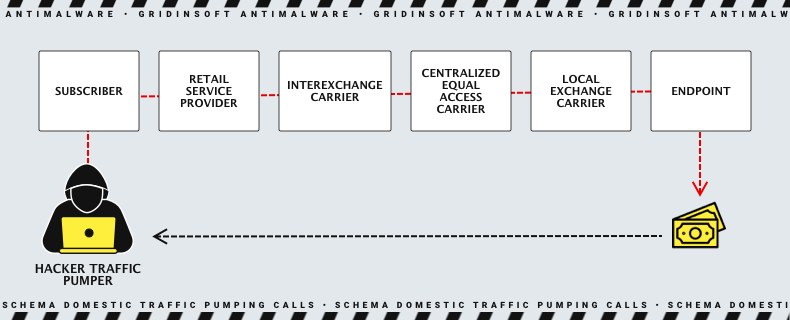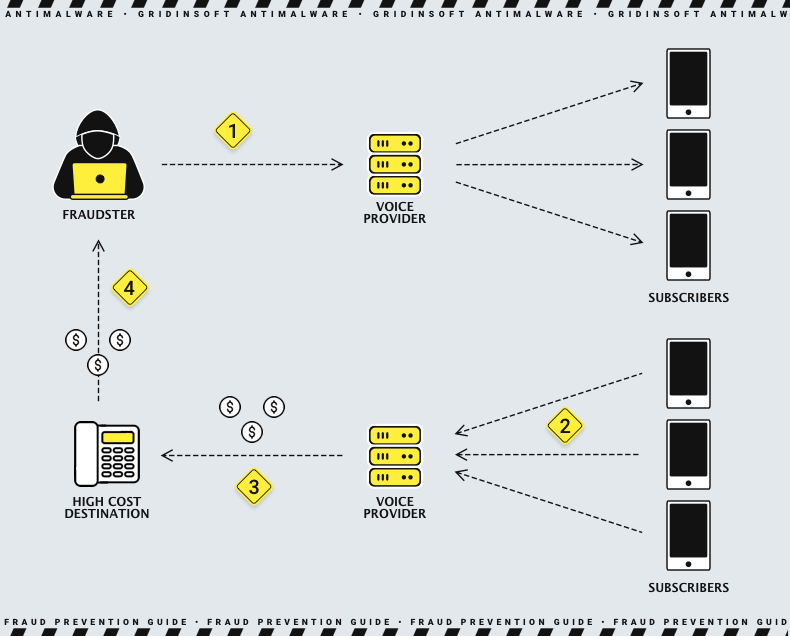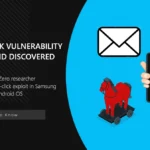Phone scams continue to plague consumers worldwide, with fraudsters developing increasingly sophisticated tactics to steal personal information and money. Our regularly updated database of scammer phone numbers helps you identify and avoid dangerous calls before becoming a victim. This comprehensive guide includes the latest known scam numbers, common fraud techniques, and actionable protection strategies to keep yourself and your family safe.
Telephones have been integral to everyday life for decades, and scammers continue to exploit this technology with increasing sophistication. Although random calls have existed since telephones were invented, today’s scammers use advanced spoofing techniques and psychological manipulation to target unsuspecting victims. These dangerous phone calls can cause severe financial damage, identity theft, and emotional distress.
According to the Federal Trade Commission (FTC), Americans lost over $8.8 billion to fraud in 2023, with phone scams accounting for a significant portion of these losses. Technology has made it remarkably cheap and efficient for scammers to conduct mass-calling campaigns—modern robocalling services can make up to 5,000 simultaneous calls per second for just a dollar. In 2025, the problem continues to grow, with approximately 67% of consumers reporting an increase in suspicious calls compared to previous years.
Latest Reported Scam Numbers (Updated June 2025)
The following database contains phone numbers recently reported as being used in scam operations. We update this list regularly as new scam numbers are identified and reported. If you receive calls from any of these numbers, do not engage with the caller and never return calls to these numbers.
| Scam Type & Description | Phone Numbers |
|---|---|
| PayPal/Payment Processing Claims of unauthorized charges, account suspension, or required security verification | (888) 435-0157 (888) 446-4268 (888) 317-9781 (669) 318-1006 (832) 572-3572 (802) 277-7684 |
| Tech Support (Norton/McAfee/Microsoft) False virus alerts, subscription renewal scams, claims of hacked accounts | (844) 209-0053 (805) 329-3901 (844) 412-3148 (844) 412-3109 (888) 676-3163 (850) 312-8329 (401) 405-4510 (855) 469-1838 |
| Refund Scams Claims of billing errors requiring bank details for “refunds” | (866) 960-5658 (888) 446-4268 (802) 278-0091 (808) 767-6925 (833) 419-2931 (814) 308-0776 |
| Financial Services/Debt Relief Fake debt invalidation, tax relief services, unauthorized credit applications | (308) 244-9810 (580) 324-5820 (800) 600-6029 (888) 711-7543 |
| Government Impersonation Medicare fraud, Social Security suspension, IRS tax collection threats | (866) 873-2001 (866) 409-8145 (718) 340-3284 |
| Cryptocurrency/Investment Fake investment opportunities, crypto wallet “support,” recovery services | (833) 714-3960 (313) 816-6224 |
| Retail/Shopping Amazon Prime “activation,” delivery issues, fake online store support | (877) 720-1446 (888) 510-2279 |
| Utility Services Fake energy company representatives threatening service disconnection | (805) 505-2826 |
| Medical/Health Medical alert scams, fake health insurance offers, medication discount scams | (801) 893-8159 |
This database is maintained through user reports, FTC data, and our own research. If you’ve encountered a scam call from a number not listed above, please report it to the FTC’s Fraud Reporting System and contact us to help keep this list current.
Traffic Pumping Scams
Traffic pumping (also called access stimulation) is a scheme that exploits the telecommunications payment system to generate excessive call volumes to certain rural areas, resulting in inflated connection fees. When you receive a message warning that a call is outside your plan and will incur extra charges, you may be encountering traffic pumping.
Under federal regulations, rural carriers can charge wireless and long-distance providers higher fees for connecting calls to local subscribers. According to the Federal Communications Commission (FCC), some rural carriers partner with chat services, adult entertainment lines, and “free” conference call providers to artificially inflate call volumes to their area codes.

These inflated call volumes allow rural carriers to bill wireless and long-distance companies enormous amounts, with kickbacks going to the chat lines and other partners. The higher costs are ultimately passed on to consumers through increased rates and fees. To avoid these charges, you must hang up before connecting with the subscriber.
Area codes commonly involved in traffic pumping are typically located in sparsely populated rural areas. The following area codes have been frequently associated with traffic pumping operations:
- 712: Western Iowa
- 218: Northern Minnesota
- 605: South Dakota
- 580: Western Oklahoma
- 620: Southern Kansas
One-Ring Scam: International Callback Fraud
The one-ring scam (also known as Wangiri fraud, Japanese for “one ring and cut”) exploits human curiosity to generate expensive international call charges. In this scam, automated systems call your phone and hang up after one ring, sometimes repeating this pattern several times to create the impression of urgency. The goal is to prompt you to call back the unfamiliar number.

When you return the call, you’re typically connected to an international premium rate service that charges $15 to $30 per minute. You might hear a recorded message or be put on hold to maximize the duration of the call. The scammer receives a portion of these international fees, and their automated systems can make millions of calls daily at minimal cost.
To protect yourself from one-ring scams, be particularly cautious of calls from area codes 473, 809, and 900, as well as any international numbers beginning with +1. If you miss a call from an unfamiliar number, don’t call back—instead, wait to see if the caller leaves a voicemail, or research the number online before responding.
High-Risk International Area Codes to Avoid
The following area codes are frequently associated with international premium rate scams. If you receive a missed call from any of these codes, exercise extreme caution and avoid calling back unless you’re certain of the caller’s legitimacy:
| Area Code | Country/Region | Risk Level |
|---|---|---|
| 232 | Sierra Leone | High |
| 242 | Bahamas | Medium |
| 246 | Barbados | Medium |
| 268 | Antigua and Barbuda | High |
| 284 | British Virgin Islands | Medium |
| 345 | Cayman Islands | Medium |
| 441 | Bermuda | Medium |
| 473 | Grenada, Carriacou and Little Martinique | Very High |
| 649 | Turks and Caicos Islands | Medium |
| 664 | Montserrat | High |
| 721 | St. Maarten | High |
| 758 | Saint Lucia | Medium |
| 767 | Commonwealth of Dominica | High |
| 784 | St. Vincent and the Grenadines | High |
| 809, 829, 849 | Dominican Republic | Very High |
| 868 | Trinidad and Tobago | Medium |
| 876 | Jamaica | High |
| 869 | Saint Kitts and Nevis | Medium |
| 876, 658 | Jamaica | High |
| 900 | Premium Rate Services (US) | Very High |
Ring and Run Urgency Scams
Ring and run urgency scams manipulate victims by creating a false sense of emergency or time pressure. The scammer typically impersonates an authority figure or someone in need of immediate assistance. These calls may claim to be from:
- Law enforcement claiming you or a family member is in legal trouble
- Hospitals reporting a relative has been injured
- Court officials regarding jury duty violations or outstanding warrants
- Bail bondsmen requesting money for a family member’s release
- Collection agents threatening immediate legal action
- Utility companies threatening imminent service disconnection
The scammer may provide just enough information to cause panic before suddenly hanging up or asking you to call back on a different number. This tactic is designed to prevent you from thinking clearly or verifying the information. When you call back, you may be connected to a premium rate number or pressured to provide personal information or payment.

The “grandparent scam” is a particularly cruel variation that targets older adults. The caller claims to be a grandchild in trouble (often arrested or in an accident) and needs money immediately. The scammer may have gathered family information from social media to make the call sound legitimate. In 2023, the FTC reported that Americans over 60 lost nearly $1.5 billion to various forms of fraud, with family emergency scams accounting for a significant portion.
Tech Support and Refund Scams
Tech support and refund scams have become increasingly sophisticated in 2025, with scammers impersonating well-known technology companies like Microsoft, Norton, McAfee, and Apple. These scams typically begin with a phone call, pop-up alert, or email claiming there’s an urgent problem with your device or account.
In tech support scams, callers claim to represent technical support departments and insist your computer has been infected with malware or has critical errors. They’ll request remote access to your device, which allows them to:
- Install actual malware or spyware on your system
- Access sensitive files and personal information
- Steal passwords and financial details
- Create backdoors for future access
Refund scams are a growing variant where scammers claim you’re owed a refund for tech services, antivirus subscriptions, or other products. The caller guides you through a complex process supposedly to issue your refund, but actually manipulates banking interfaces to make it appear that they’ve accidentally transferred too much money to you. They then pressure you to return the “excess” amount, often through gift cards or cryptocurrency—money you’ll never recover.
Tech support and refund scams resulted in over $547 million in reported losses in 2023, with average losses exceeding $1,200 per victim, according to FTC data. Many of the scam numbers listed earlier in our database are associated with these sophisticated schemes.
Government and Financial Institution Impersonation
Government and financial institution impersonation scams are among the most intimidating and effective phone scams. Scammers exploit the authority and trust associated with these organizations to manipulate victims into providing personal information or making payments.
Common government impersonation scams include:
- IRS Scams: Callers claim you owe back taxes and face arrest, property seizure, or deportation unless you make immediate payment via gift cards, wire transfers, or cryptocurrency.
- Social Security Scams: Fraudsters claim your Social Security number has been suspended due to suspicious activity or involvement in a crime.
- Medicare/Medicaid Scams: Callers offer fake services, claim you need a new card, or say you’re owed a refund to obtain your personal and medical information.
- Court/Legal Scams: Imposters claim you’ve missed jury duty or have an outstanding warrant that requires immediate payment to avoid arrest.
Financial institution impersonation typically involves calls claiming to be from your bank, credit card company, or payment service (like PayPal). These scammers often:
- Claim to detect suspicious transactions and need to verify your information
- State your account has been compromised and needs immediate verification
- Report issues with payment processing requiring your login credentials
- Offer refunds for alleged overcharges or fees that require your banking details
A critical warning sign is that legitimate government agencies and financial institutions never call to demand immediate payment, especially via unconventional methods like gift cards or cryptocurrency. They also don’t threaten arrest or legal action over the phone or ask for complete account details, passwords, or PINs.
How to Identify and Stop Dangerous Phone Calls
Protecting yourself from scam calls requires vigilance and a proactive approach. Here are effective strategies to identify and prevent dangerous phone calls:
- Let unknown calls go to voicemail – Legitimate callers will leave a message; scammers often won’t.
- Never provide personal information to inbound callers – Instead, hang up and call the organization directly using the official number from their website or your account statement.
- Use call-blocking features – Most major wireless carriers offer free call-blocking or spam-alerting services.
- Install call-screening apps – Third-party applications like Truecaller, Hiya, or Nomorobo can identify and block known scam numbers.
- Register with the National Do Not Call Registry – While this won’t stop determined scammers, it reduces legitimate telemarketing calls, making scams easier to identify.
- Be wary of area codes – Research unfamiliar area codes before returning calls, especially those on our high-risk list.
- Question urgency – Legitimate organizations rarely demand immediate action; scammers create artificial time pressure to prevent critical thinking.
- Verify caller identities – If someone claims to represent your bank, government agency, or utility company, hang up and contact the organization directly.
- Consider call management services – Services like the ones from your provider can require callers to state their name before your phone rings.
- Block international calls – If you don’t regularly receive international calls, ask your provider to block outgoing and incoming international calls.
According to the YouMail Robocall Index, Americans received over 40 billion robocalls in 2024, averaging approximately 150 calls per person. Being proactive in call management can significantly reduce your exposure to potential scams.
What to Do If You’ve Been Scammed
If you suspect you’ve fallen victim to a phone scam, taking immediate action can help minimize damage and possibly recover losses:
- Contact your financial institutions immediately – If you’ve shared bank account details, credit card information, or made payments, notify your bank or credit card company right away.
- Change your passwords – Update passwords for any accounts that may have been compromised, especially if you shared login credentials or allowed remote access to your device.
- Place a fraud alert on your credit reports – Contact one of the three major credit bureaus (Equifax, Experian, or TransUnion) to place a fraud alert, which makes it harder for identity thieves to open accounts in your name.
- Document everything – Keep detailed records of the scam call, including the phone number, what was said, and any actions you took.
- Scan your devices – If you gave someone remote access to your computer, run a comprehensive security scan to check for malware or spyware.
- Report the scam – File reports with:
- The Federal Trade Commission (FTC)
- Your local police department
- The Federal Communications Commission (FCC) for phone-related scams
- The FBI’s Internet Crime Complaint Center (IC3)
- Dispute fraudulent charges – Work with your financial institutions to dispute unauthorized transactions.
- Consider identity theft protection services – If significant personal information was compromised, consider subscribing to an identity theft protection service for ongoing monitoring.
Remember that recovering money sent via wire transfers, gift cards, cryptocurrency, or cash apps is extremely difficult, as these payment methods offer little consumer protection. However, reporting the scam helps authorities track patterns and may prevent others from becoming victims.
Frequently Asked Questions About Phone Scams
How can I tell if a phone number is a scam?
Check the number against our database or search for it online. Be suspicious of calls from unknown numbers, especially if they’re from high-risk area codes or international locations. Legitimate businesses typically don’t use pressure tactics or make threats. When in doubt, hang up and call the organization directly using their official contact information.
Will blocking numbers stop scam calls?
Blocking individual numbers provides limited protection since sophisticated scammers use different numbers for each call or spoof legitimate numbers. However, call-blocking apps and carrier services that use algorithms to identify suspicious call patterns offer better protection by blocking categories of suspicious calls rather than just specific numbers.
What information should I never give out over the phone?
Never provide Social Security numbers, account passwords, PINs, verification codes sent to your phone, complete credit card numbers, bank account details, or answers to security questions to inbound callers. Legitimate organizations typically don’t call asking for this information—instead, they ask you to log into your account or call them back through official channels.
Can scammers do anything with just my phone number?
Yes. With just your phone number, scammers can: – Attempt SIM swapping (transferring your number to their device) – Research additional information about you from data breaches or social media – Target you with personalized phishing attempts – Impersonate you to your contacts – Sign you up for unwanted services or spam
While having your phone number isn’t as immediately damaging as sharing financial information, it can be the starting point for more sophisticated scams.
Why do scammers want gift cards as payment?
Scammers prefer gift cards because they’re equivalent to digital cash—once the card numbers and PINs are shared, the money is almost immediately accessible and virtually untraceable. Unlike credit cards or bank transfers, gift card transactions can’t be reversed, and they don’t require the scammer to provide any personal information. Any request for payment via gift cards is almost always a sign of fraud.





Hi ma’am are sir I’m writing to you because someone is using my full name on telegram and my notification show up on my phone screen… with this number 229-429-0701I’ve just recently bought this iphone from t mobile sprint and I’ve never seen this number store onto my phone before it’s 229-429-0701 and every time I try to make calls this number pops up saying my name “stella stover mobile i don’t know where are who it’s trying to scam me but it’s a local number from my county.. and I’d try calling this number but it ring twice and goes to a voicemail and it ring twice and hung up can you please help should I call the law enforcement about this ? Thank you please let me know if you can help.
+447407394404
This number is from a scammer using dating apps. Dating fraud
They will try and convince you they are making an obscene amount of money to tempt you into using a fake application.
316-512-1437 is a google number being used to impersonate a US Marine named Kagan Dunlap. I’m the scammer has used his photos to roll on a dating site. And then claims he needs money to continue Internet access at Bagram airbase in Afghanistan.
820-300-9292 is this a scam number
1-404-461-9352 is an active x-finity scam phone number. I checked , so it isn’t some one innocent.
Hi there, Richard Alexander and ms. Daniels called me with threatening information saying they are from a private investigation co. Needing me to settle a 2015 credit card debt of 20k. The amount they wanted was 300.00 or 1000.00 right away so my case will not go to court. I never had a credit card. They said the police authorities will contact me because i refused to corporate. Here are the number they called from: 912-225-6831; 912-642-9003 and 443-391-9462
They would not give verification or secured documentation to me in details. I requested them to mail the paperwork or email with notary stamped but they didn’t say anything.
Please help, it’s horrible how someone can call to threaten you😥
I just had the same call Ms. Daniels saying I owed money from a credit card debt which I didnt even have. They wouldnt send me documents or proof said if I didnt pay I would be taking to court . The number she called from was 912-6429-003 and a Todd Bowens called from 1-844-699-2400 said he was with William Associates DONT FALL FOR IT !!! SCAMMM!
I got the same call!!! They had all my information which made it so convincing, but once I said I would like to dispute it and to send me paperwork she was so mad!!! She would get mad when I would ask her to confirm information or when I doubted something she said. She said she was Ms Daniels and was going to take me to court and have the sheriff come out to serve me. She threatened to have all my properties seized and bank accounts. These people must be stopped. They called from +1 (912) 642-9003 and +1 (682) 977-9782.
I got the same call just now. I didn’t even let them talk. As soon as he started his pitchI recognized it as a scam call.
I just hung up.on him mid sentence. Very satisfying. 🙂
Not sure about this call. The man had an Australian accent and he said that we needed to call 866-760-5261. He also left a document number but when I called this number the man answered as a Law Department. So I am not sure if it’s real or not??? Frighten for my son, he has never hurt or done anything unlawful. Why are they doing this???
Watch for 202 area codes also 917
I was scammed by some scammers that said they were with the FTC they are not with the government at all
But they sound convincing
Also another scam stating they are with prize money
+371 25956648
Be aware of this number (scammer call center) they pretend to be police authorities to fish out your personal data, etc.
+30 2109649429
Scammers pretending to call from the US Green card program.